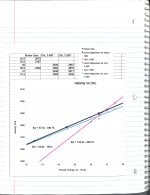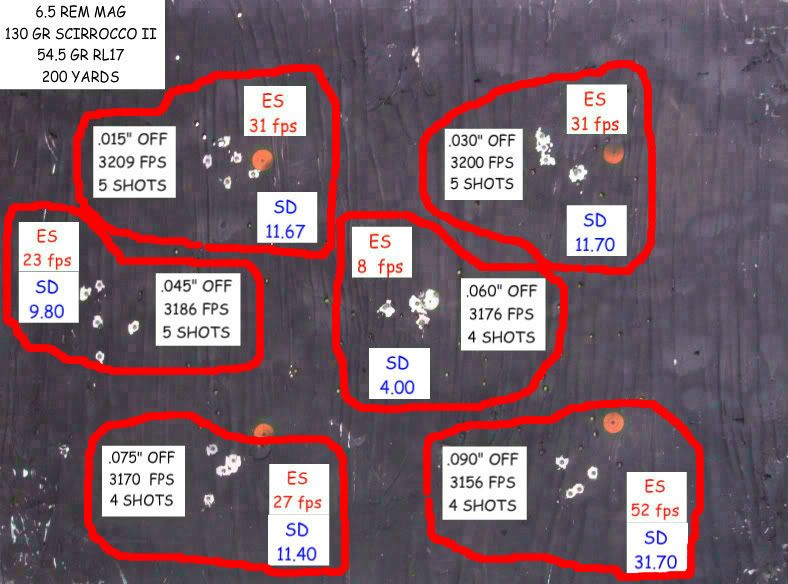My old reloading manuals state that when you seat your bullet close to the lands you may experience higher pressures than if you seat your bullet with the OAL they list with their reloading data. I think I have some data here that clearly illustrates that point.
On January 12th I posted some results I obtained shooting:
270 Win
New Norma Brass
WLR Primer
150 Gr. CTBST
RL 22
Bullet Jump of .025"
I got very good accuracy but I seemed to get very large velocity increases with .5 Gr. powder charge increases. I wasn't sure if I had some bad velocity data or if I was getting high velocity increases because of a short bullet jump. I indicated I was going to rerun some tests with two different bullet jumps and compare the results. I finally had an opportunity to shoot the trials on Monday.
I loaded cartridges with 56.0, 56.5, 57.0, and 57.5 grains of RL 22. One batch was loaded to an OAL of 3.400" which would give a bullet jump of about .025". The other batch was loaded to an OAL of 3.380" which would give a bullet jump of about .045".
The velocity results are listed in an image below. The results are also plotted on a graph along with data from the Nosler reloading guide.
The data clearly shows that, in the range of charges tested, the loads with an OAL of 3.400" (.025" jump) (red line) had an increase in velocity of about 100 FPS per Grain of powder whereas the loads with an OAL of 3.380" (.045" jump) (blue line) had an incresae in velocity of about 50 FPS per Grain of powder charge. The loads with a bullet jump of .045" more closely approximates the Nosler data (black line).
I think this illustrates exactly what the reloading manuals caution us about when seating the bullets close to the lands and the need to work up loads carefully.
By the way, the four shot (four different charge weights) group with an OAL of 3.380" measured only 0.6" C/C.
The next tests will be with a powder charge of 57.0 grains and an OAL of 3.380".
On January 12th I posted some results I obtained shooting:
270 Win
New Norma Brass
WLR Primer
150 Gr. CTBST
RL 22
Bullet Jump of .025"
I got very good accuracy but I seemed to get very large velocity increases with .5 Gr. powder charge increases. I wasn't sure if I had some bad velocity data or if I was getting high velocity increases because of a short bullet jump. I indicated I was going to rerun some tests with two different bullet jumps and compare the results. I finally had an opportunity to shoot the trials on Monday.
I loaded cartridges with 56.0, 56.5, 57.0, and 57.5 grains of RL 22. One batch was loaded to an OAL of 3.400" which would give a bullet jump of about .025". The other batch was loaded to an OAL of 3.380" which would give a bullet jump of about .045".
The velocity results are listed in an image below. The results are also plotted on a graph along with data from the Nosler reloading guide.
The data clearly shows that, in the range of charges tested, the loads with an OAL of 3.400" (.025" jump) (red line) had an increase in velocity of about 100 FPS per Grain of powder whereas the loads with an OAL of 3.380" (.045" jump) (blue line) had an incresae in velocity of about 50 FPS per Grain of powder charge. The loads with a bullet jump of .045" more closely approximates the Nosler data (black line).
I think this illustrates exactly what the reloading manuals caution us about when seating the bullets close to the lands and the need to work up loads carefully.
By the way, the four shot (four different charge weights) group with an OAL of 3.380" measured only 0.6" C/C.
The next tests will be with a powder charge of 57.0 grains and an OAL of 3.380".









